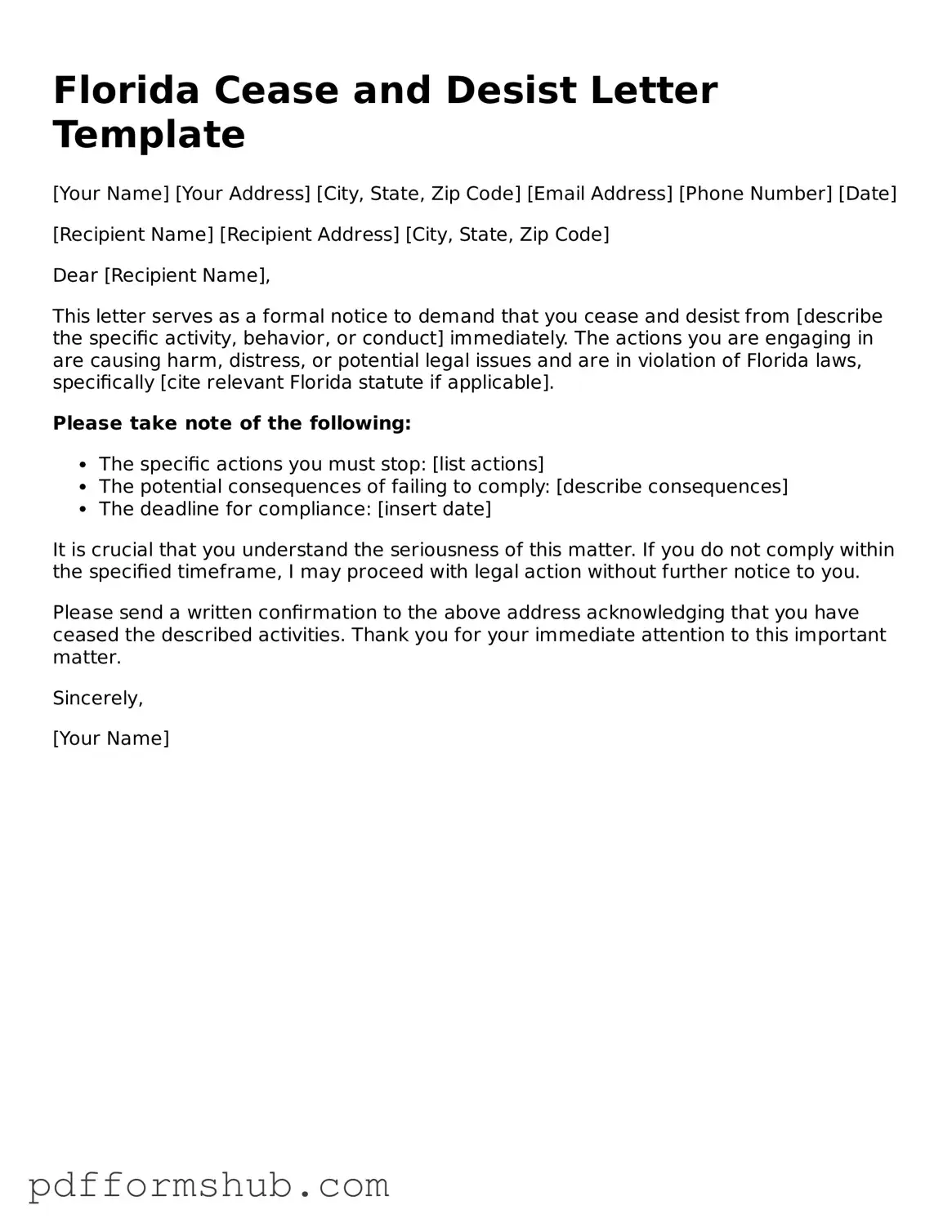Attorney-Verified Cease and Desist Letter Form for Florida State
A Florida Cease and Desist Letter is a formal document used to request that an individual or organization stop certain actions that are believed to be harmful or unlawful. This letter serves as a warning before further legal action may be pursued. Understanding how to properly fill out this form is essential for protecting your rights and interests.
If you are ready to take the next step, please fill out the form by clicking the button below.
Customize Form
